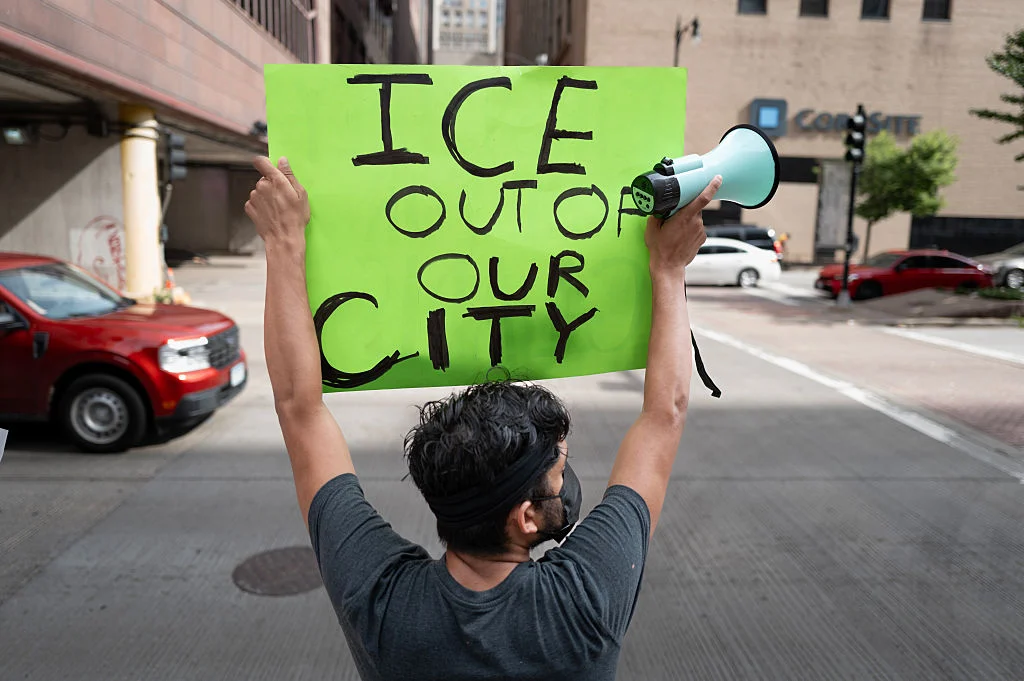Unfolding Events in Chicago’s South Shore Neighborhood: A Night of Immigration Enforcement
On a seemingly ordinary Monday night, the quiet hum of Chicago’s South Shore neighborhood was shattered by a late-night raid that has since ignited intense discussions surrounding immigration policies and community safety. The Department of Homeland Security (DHS) launched a significant operation targeting suspected gang activity, but what transpired raised more questions than answers for residents.
The Raid: Details and Claims
According to DHS, the operation focused on the Venezuelan gang Tren de Aragua, purportedly involved in various criminal activities. The agency reported that 37 individuals were arrested at 7500 South Shore Street, claiming that the raid was part of a broader immigration enforcement operation in collaboration with the FBI. The people of South Shore, however, would soon tell a different story—one filled with fear and confusion.
Alarm and Confusion Among Residents
Residents began their nights unaware that their homes would soon become the backdrop of a federal crackdown. Many were abruptly awakened, only to find themselves zip-tied and escorted into U-Haul and Budget trucks. Reports from those present describe a scene of chaos and terror, where even U.S. citizens were detained under dubious circumstances.
One harrowing account comes from Rodrick Johnson, a 67-year-old U.S. citizen, who recounted how agents broke down his door and held him for hours. Johnson was bewildered by the experience and demanded to know why he was being detained. “I asked [agents] why they were holding me if I was an American citizen, and they said I had to wait until they looked me up,” he reported.
The Emotional Toll on Families
The immediate psychological impact on the community was profound. Pertissue Fisher, another resident, expressed her shock when ICE agents handcuffed her, stating, “They treated us like we were nothing.” She described the horror of having a gun pointed at her during the ordeal. Fisher, along with many others, recounted being held for hours without knowing when they might be released.
Witnesses reported seeing children among those who were detained, some even separated from their parents. Eboni Watson, a neighbor, shared that she saw young children without shoes or proper clothing. The sight was heart-wrenching, as parents and children experienced anguish and confusion amidst a chaotic situation.
The Aftermath: A Community in Disarray
In the days following the raid, the aftermath was palpable. Residents returned to find their homes in disarray, a stark reminder of the storm that had swept through their lives. Photos surfaced showing personal belongings jumbled together in hallways, broken doors, and strewn household items—testaments to a night that disrupted lives and left many feeling vulnerable.
It became painfully clear that the building, which had already been neglected and reportedly abandoned by its owner and management, was further deteriorating. Tattered children’s toys and clothing left behind echoed the displacement felt across families. The lost sense of community was evident; neighbors began to realize they were missing their friends and family members.
Community Resilience Amid Uncertainty
Despite the turmoil, the community’s resilience shone through. Neighbors spoke up about their experiences, narrating tales of bravery mingled with fear. Many shared their apprehensions regarding the continued safety of their neighborhood and families. Local leaders and activists began gathering to discuss ways to support the affected individuals and families, seeking to offer assistance in emotionally charged times.
DHS posted a promotional video on their social media platforms, highlighting their ongoing efforts in what they called “Operation Midway Blitz,” boasting of over 900 arrests in Illinois. This prompted mixed reactions from those who viewed it—notably, many felt that it disregarded the complex realities faced by everyday citizens during such operations.
Toward Understanding the Bigger Picture
As these events unfold, they reveal layers of complexity regarding immigration enforcement in the United States—issues that touch upon safety, community trust, and human dignity. The South Shore neighborhood, once a sanctuary for many, stands in stark contrast to the narrative painted by federal agents. As conversations continue, both within the community and beyond, the stories of those directly affected serve as poignant reminders of the need for empathy and understanding in discussions surrounding immigration and law enforcement.



